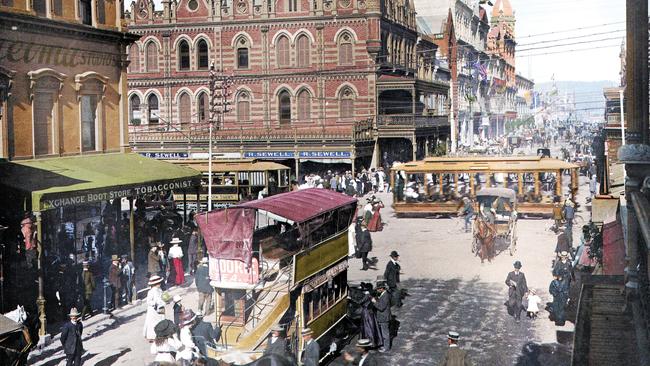25 historical figures who visited Adelaide: Part 1
Royalty, musicians and legendary magicians have all been bound for South Australia over the years, along with one mysterious man who may have been one of history’s greatest artists.
SA Weekend
Don't miss out on the headlines from SA Weekend. Followed categories will be added to My News.
- Amazing colourised historical pictures of Adelaide daily life
- Latest subscriber exclusive giveaways, specials and prizes
They came from around the world, some for the cash, some out of duty, others for adventure and one or two were just passing by, but all of them were, or became, some of the most famous people who ever lived.
They were princes who became kings, scribblers who became great novelists, the stars of screen and stage, and even the most wanted criminal on earth.
In the days before comfortable air travel, visiting our state was a trial, it required effort and commitment — but come they did to pass judgment on Australia’s only free settler colony. Some thought us a better class of Aussie, others appallingly uncouth, one American novelist’s highest compliment was reserved for our draining system, while a giant of 20th century literature loved the Port Adelaide pubs.
But whether they appreciated us or not, and whether we took to them, South Australians first brushes with celebrity and glimpses of fame would leave their mark on the state.
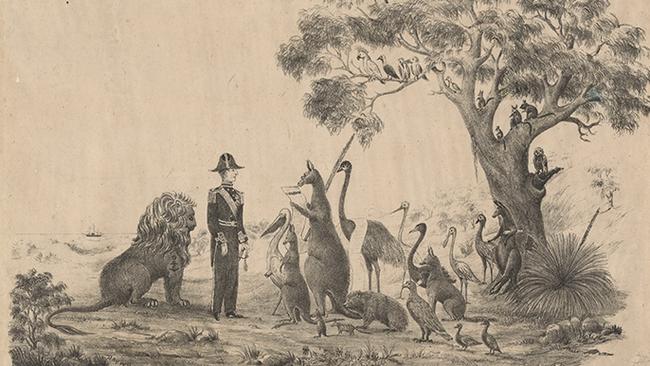
1/ Prince Alfred, Duke of Edinburgh (1867)
Massive crowds on the Glenelg dock greeted Prince Alfred, at the commencement of the first royal tour to Australia on October 31, 1867.
The fourth child and second son of Queen Victoria and Prince Albert spent three weeks in the colony of South Australia, delivering a glowing review of the locals.
“I have noticed in Adelaide an absence of the poor and rowdy class, so numerous elsewhere,” the 23-year-old wrote in his journal.
Activities included attending Prince Alfred’s College, at Kent Town, named in his honour, and a night shoot in the Adelaide Hills, where the Prince is said to have bagged 52 possums.
Several reports describe Alfred’s time in South Australia as “uneventful” but that wasn’t true for the rest of his five month Australian trip which was marred by rioting, high farce, tragedy and Australia’s first political assassination attempt.
At the Sailor’s Picnic gathering at Clontarf in Sydney in March 1868, the Prince was shot in the back by Irish-born fruit seller Henry O’Farrell, 35, an alcoholic who only that week had been released from (as it was known then) a lunatic asylum.
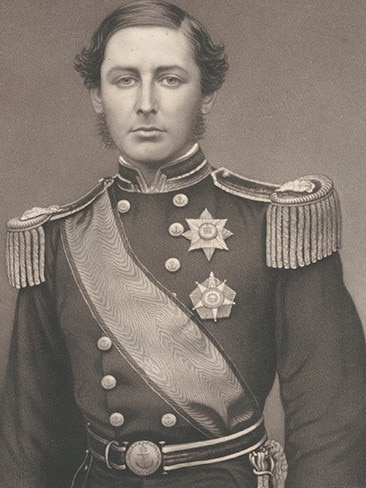
The Prince survived the incident and fared better than O’Farrell, who was beaten to a pulp by an outraged mob and nearly lynched before police rescued him.
The Prince, who spend two weeks in hospital cared for by nurses under the training of Florence Nightingale, in Australia at the behest of NSW Premier Sir Henry Parkes, tried to intervene to save the life of the assailant – but to no avail.
O’Farrell was tried, convicted and hanged the next month.
By which time the Prince was on the ship back to Great Britain, leaving heightened anti-Irish and Catholic sentiment in Australia.
Overall, his tour was considered a considerable success and strengthened ties between the mother country and the new colony.
2/ Anthony Trollope (1872)
Regarded as the first person in print to name Adelaide as the “City of Churches” the prolific English novelist, known for the Chronicles of Barsetshire series of six novels, visited South Australia twice during the 1870s.
Considered the first genuine celebrity to set foot in the colony, Trollope didn’t endear himself to the locals with his 1872 description of the Torrens River as: “Anything in the guise of a river more ugly than the Torrens it would be impossible to either see or to describe.”
The Adelaide Observer was quick to counter, saying Trollope’s work made “very dreary reading”.
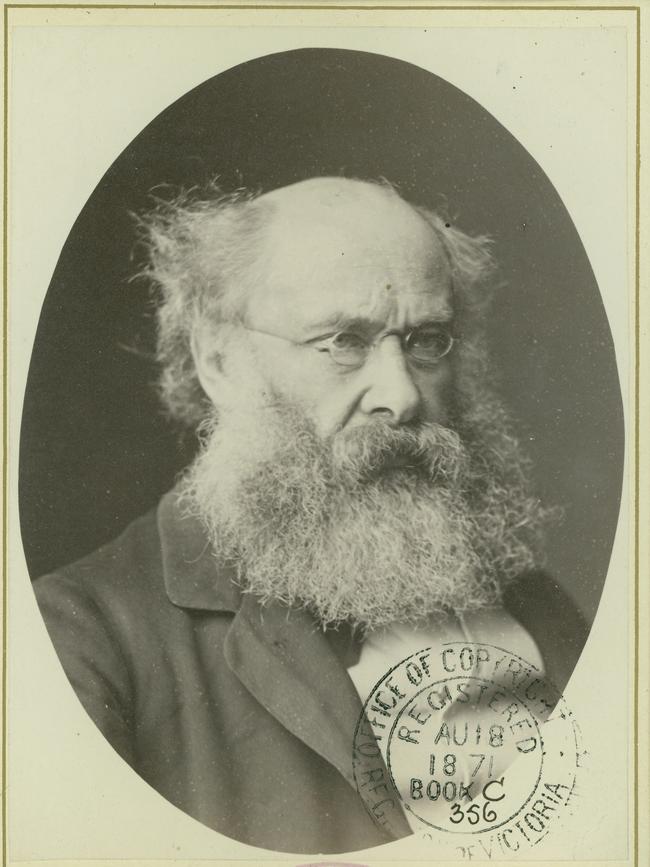
A leading official of the UK Post Office, which he joined as a 19-year-old in 1834, Trollope’s recommendation saw the introduction of the pillar box to Britain in 1854.
Not surprisingly, he saved some praise during his Adelaide time for the imposing GPO building calling it the “grandest edifice in the town’’.
But after 18 months, Trollope’s regard for the joys of antipodean hospitality had reached its limit: “I am reduced to the vilest tobacco out of the vilest pipe, and drink the vilest brandy and water – often in very vile company.”
Trollope was far warmer and forgiving in his two-volume memoir entitled Australia and New Zealand (1873) that details his travels and observations down under.
The man of letters died less than 10 years after its publication, in London, the city of his birth, aged 67.
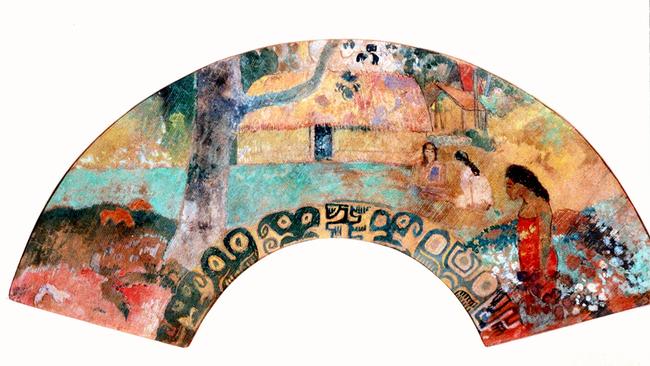
3/ Paul Gauguin (1881)
Could a ‘Mr Goggin’ who visited Adelaide around the turn of the 20th century really have been the French impression painter Paul Gauguin, fallen on hard times, come to sell his wares?
In 1988, Adelaide novelist Tess Brady, based on evidence she discovered in the Mortlock and Adelaide public libraries, tracking ship passenger lists of the time, determined that he was.
And, not only that he came here once, but thrice.
Rifling through the newspapers of the age she found a ‘Paul Gauguin’ was in Adelaide on Sunday, May 3, and Monday, May 4, 1881; Wednesday, August 2, 1893; and Thursday, August 1 and Friday, August 2, 1895.
He had sailed on the Oceanian, the Armand Behic and the Australian, respectively, that had all docked at Port Adelaide.
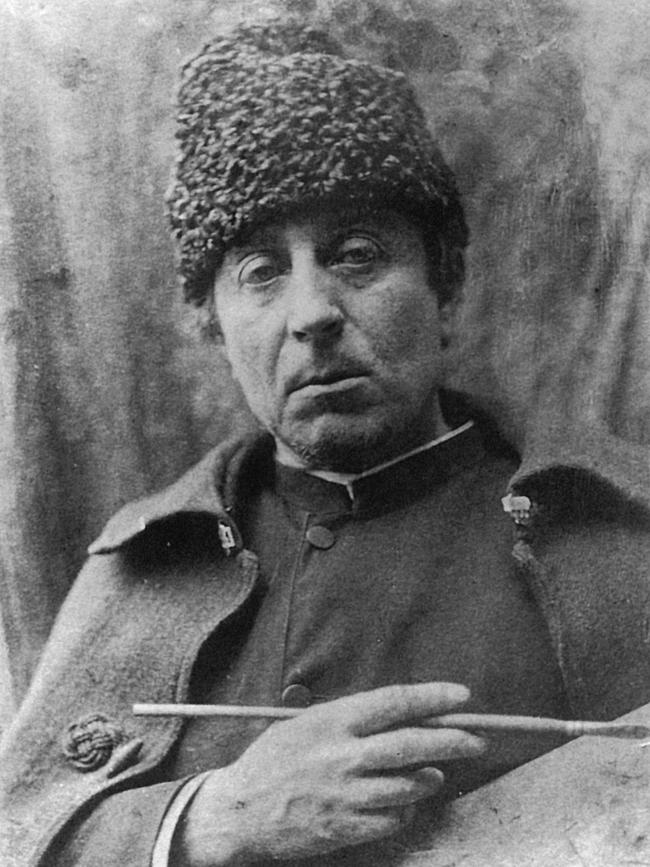
Ms Brady’s research was inspired by the eccentric Gilbert Ponder, who claimed to have met Gauguin in Adelaide and wrote the book “Mr Goggin Comes To Town”, published in 1971, to commemorate the occasion.
Ponder claimed to be 13 at the time of the meeting and working for his uncle’s advertising agency in the Royal Exchange Building in King William Street.
Unfortunately, the dates don’t match. Ponder, who died in 1974, was born in 1890 and was only five years old at the time of Gauguin’s final alleged visit in 1895.
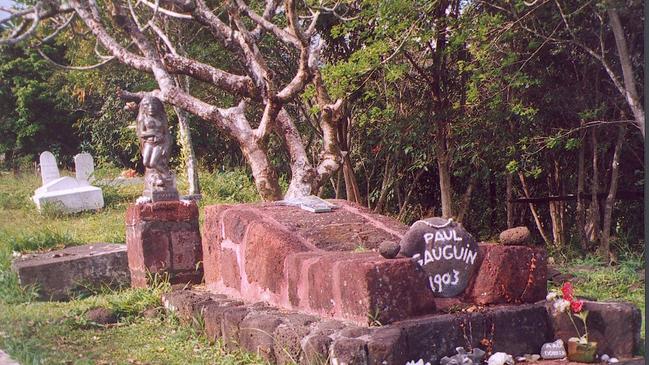
Given the interest and controversy surrounding the ‘Gauguin’ paintings and artefacts at Carrick Hill house, it is probably not surprising stories of Gauguin in South Australia exist.
During his many years in the South Seas based in Tahiti, he unquestionably visited Auckland, where he signed the Art Gallery visitors book, but incontrovertible evidence he came to Adelaide is still to be presented.
4/ Sarah Bernhardt (1891)
The legendary French stage actor, among the first to make sound recordings and to act in motion pictures, performed in Adelaide in the midwinter of 1891 at the age of 46.
Forever battling debts despite incredible wealth, her Australian visit was part of a world tour that generated astonishing incomes.
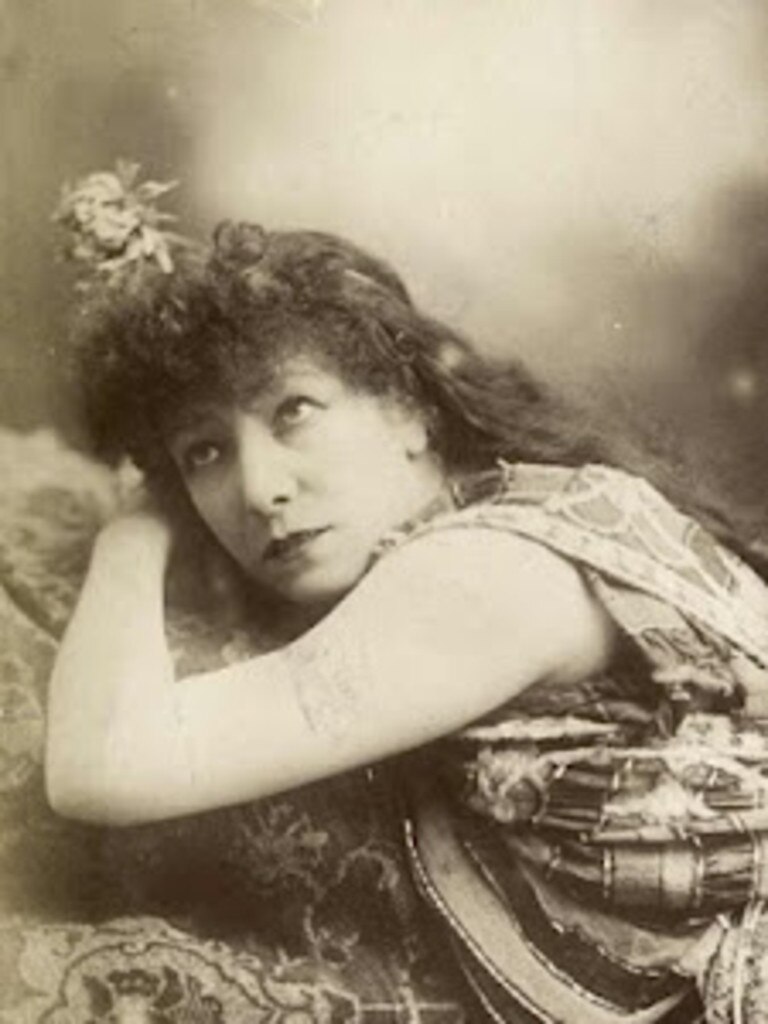
Her personal luggage consisted of 45 costume crates for 15 different productions, and 75 crates for offstage clothing, including more than 200 pairs of shoes.
On July 2, 1891 she performed in La Tosca, a five-act drama by the 19th-century French playwright Victorien Sardou at the Theatre Royal in Hindley Street – the main venue for theatrical performances in Adelaide for almost a century.
Bernhardt was the first to play the title role of Tosca, later adapted as an opera by Puccini, in Paris four years earlier.
The South Australian Register reported: “Madame Bernhardt’s acting aspired the audience with the deepest sympathy with the ill-fated creature who ended her life in the Tiber, and with sentiments of detestation for the pitiless politician who so ruthlessly ruined two fair lives. La Tosca interpreted by the ‘divine Sarah,’ will be long remembered in Adelaide.”
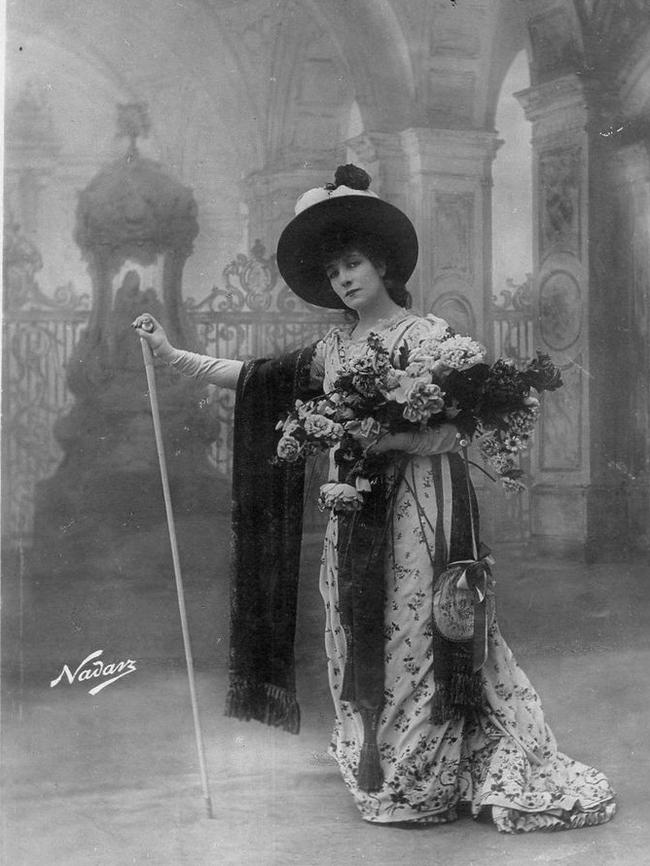
Two days later she performed at the Theatre Royal as Adrienne Lecouvreur in a play about the French actor as popular with the public as Bernhardt was 150 years later.
It was during this world tour in Buenos Aires, Bernhardt, as Tosca, leaping from the stage, representing the parapet of the Castello Sant’ Angelo in Rome, suffered a painful injury to her knee, that would eventually see her leg amputated at the hip in 1915.
Even that failed to end a remarkable career.
She had generated affection, acclaim and legendary notoriety for being odd – she kept a satin-lined coffin in her bedroom to sleep in.
Bernhardt died while making the film La Voyante, in Paris in 1923, aged 78.
5/ Joseph Conrad/John Galsworthy (1893)
Who could have guessed two of the greatest writers of history began their 30-year association down by the docks at Port Adelaide?
They were Joseph Conrad, regarded as one of the greatest ever English novelists despite not speaking the language until his 20s and John Galsworthy, a Literature Nobel Laureate most famous for his ‘Forsyte Saga’ (1932).
Conrad, born Teodor Josef Konrad Korzeniowski in Ukraine, and best known as the author of Heart of Darkness, based on his treacherous voyage down the River
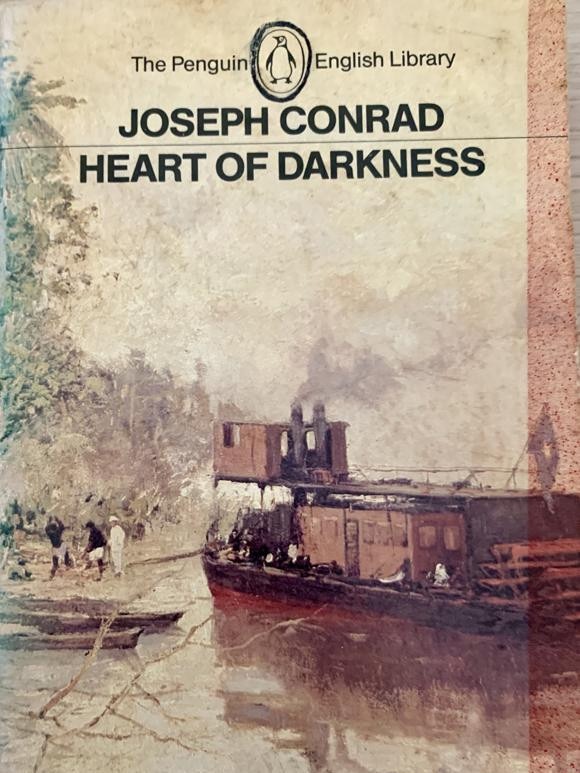
Congo in 1890, spent the first 20 years of his adult life travelling the seven seas.
In 1893, as the chief officer of the Windjammer vessel, Torrens, he fell ill in Port Adelaide and spent seven weeks – several in the Adelaide Hills to escape the intense summer heat – recuperating from his ailments.
When he was finally fit enough to resume the voyage he met Galsworthy, a 23 year-old lawyer – who hated law – who was a passenger on the Torrens.
The pair struck up many conversations on their trip to Capetown, where the dissatisfied lawyer left the ship, and continued their correspondence over the decades when both became giants of the literary world.
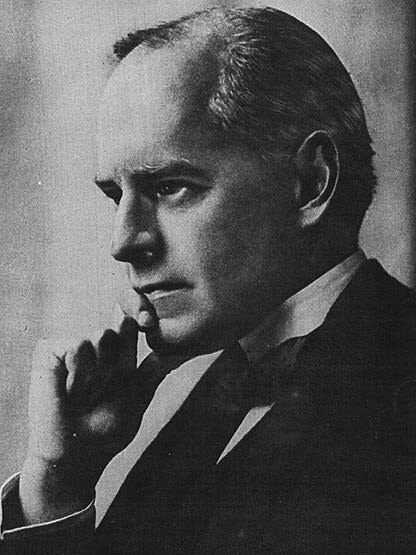
The 1893 trip was Conrad’s third to South Australia.
In a letter to an acquaintance, he details a voyage of 1889 to the tiny port of Minlacowie, on Yorke Peninsula, full of “tea-sipping ladies” when he was master of the Otago, a barque owned by the Port Adelaide firm of Henry Simpson & Sons.
The Torrens, a magnificent vessel designed to carry both cargo and passengers proved to be Conrad’s final commission.
It was the ship he loved the most.
He made his first passage on the Torrens from London in November 1891, reaching Adelaide on February 28, 1892.
The vessel remained in port for five weeks when its first officer “thoroughly enjoyed” the taverns of the town.
Returning to London from Capetown on the final trip of 1893, Conrad abandoned a seafaring career to become a full-time novelist.
6/ Mark Twain (1895)
At the height of his fame, but faced with financial ruin from the failure of yet another ill-judged business venture, author and humorist Mark Twain (Samuel Langhorne Clemens) was compelled to travel the world on a money-making lecture tour.
He arrived in Adelaide in October 1895 together with wife Olivia and youngest daughter Jean, staying a few nights at the York Hotel, later the Grand Central Hotel, on the corner of Pulteney and Rundle Streets.
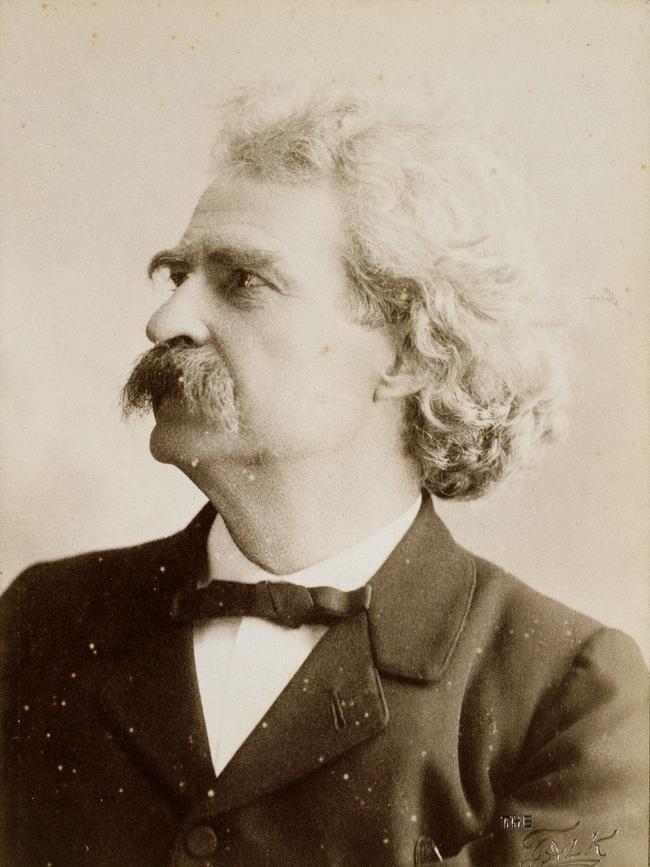
The South Australian Register reported on a meeting with several city magnates, including the state’s colourful and controversial Premier, Charles Kingston, in the Town Hall parlour of Adelaide Mayor Charles Tucker.
Said to be “by no means so dishevelled as he looks in his counterfeit presentments”, Mr Twain was “most characteristically welcomed” and responded with generous observations of the colony.
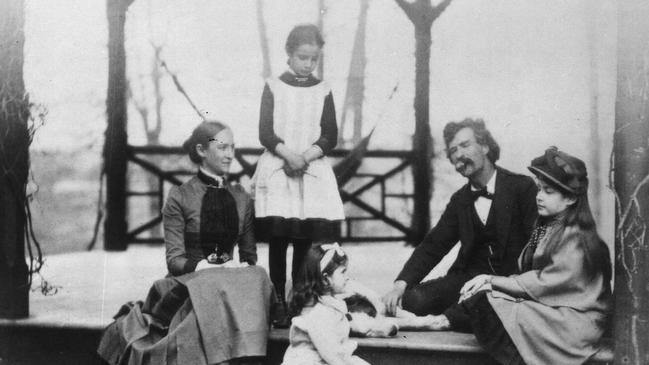
“He had seen a portion of the fair city and its surroundings, and it confirmed what he had read about it. He had heard that its aspect was beautiful, its buildings fine, and its drainage excellent,” The Register recorded.
“He had seen the hill country from Aldgate to Adelaide, and had admired the mountainous region. If the other parts of South Australia were as beautiful then it must indeed be blessed.”
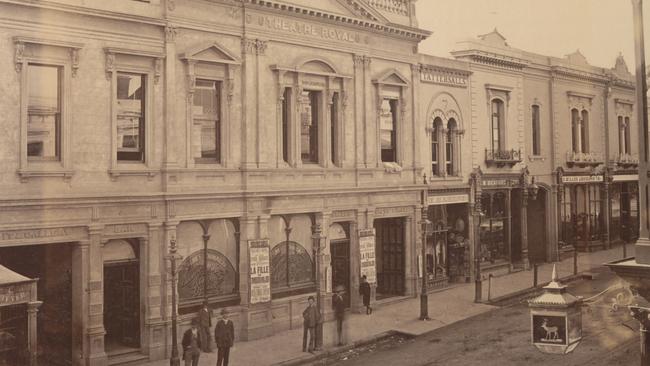
That night the Theatre Royal in Hindley Street was packed to the rafters with 3000 people crammed in to hear tales from the author of adventures with Huckleberry Finn and Tom Sawyer.
7/ Harry Houdini (1910)
Born Erik Weisz in Budapest, in 1874, Harry “Handcuff” Houdini set foot in South Australia on February 5, 1910 as the first stop on a 14-week stay in Australia that would add to his legend.
Australian impresario and theatre owner Harry Rickards enticed Houdini to visit Australia with an unprecedented offer of $US2000 a week, the equivalent of $250,000 today.
He arrived at Port Adelaide on the P & O liner RMS Malwa with wife Bess, assistants Franz Kukol and James Vickery, and a man recorded in The Advertiser as a “Mr Brassac’’.
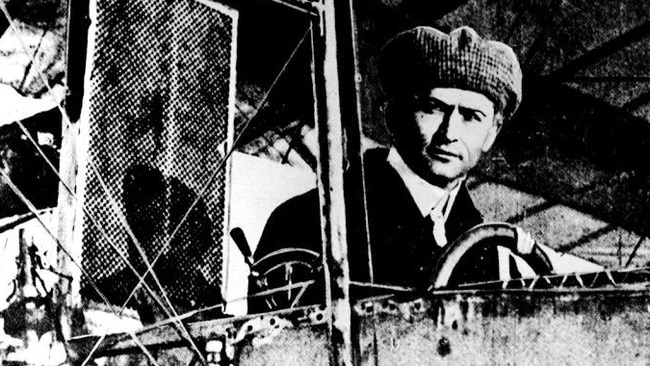
Houdini had intended to stay in Adelaide a few days and perform his escapology show but a delay in landing left him running late to open at the New Opera House in Melbourne on February 7.
He left town the next morning with his entourage on the Overlander train.
Among their luggage unloaded from the ship were several large crates packed with parts of a French Voisin biplane.
Five weeks later, on March 18, in front of a crowd of 3000 wellwishers, at Diggers’ Rest, 33km northwest of Melbourne, Houdini was acclaimed as the first person to record a powered flight in Australia.
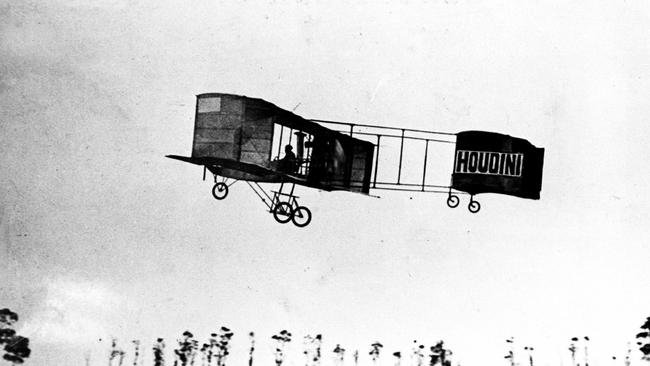
His diary records: “Never in any fear and never in any danger; it is a wonderful thing.’’
Nevertheless, there is strong evidence Houdini was actually beaten to the flying record by one day – by a South Australian teenager, Frederic Custance, piloting a Bleriot Type XI monoplane at Bolivar north of Adelaide on March 17, 1910.
8/ W. C. Fields (1914)
US-born William Claude Dukenfield was one of the first great vaudeville performers and silent movie stars, as famous in his heyday as the late Robin Williams as a comedian and actor.
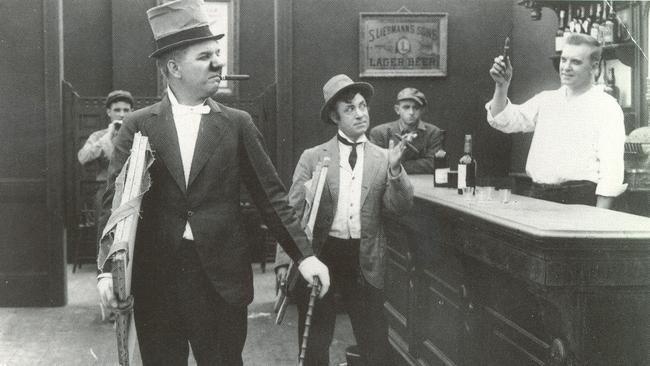
The Tivoli Theatre, known today as Her Majesty’s Theatre on Grote St in Adelaide, opened in September 1913 and one of its first box office attractions was the redoubtable Mr Fields, billed as ‘The World’s Greatest Silent Humorist’.
The Mail review of June 13, 1914, entitled ‘The Golf Fiend – By Sam Snow’ was generous in its appraisal of his talents as a juggler, clown and comic.
Readers were told: “W.C. Fields is not such a fool as he looks on the stage. At work he appears to be the absolute limit in the matter of silliness. But it took him many years to cultivate that sublimely ridiculous look, and to him it has been worth thousands of pounds.
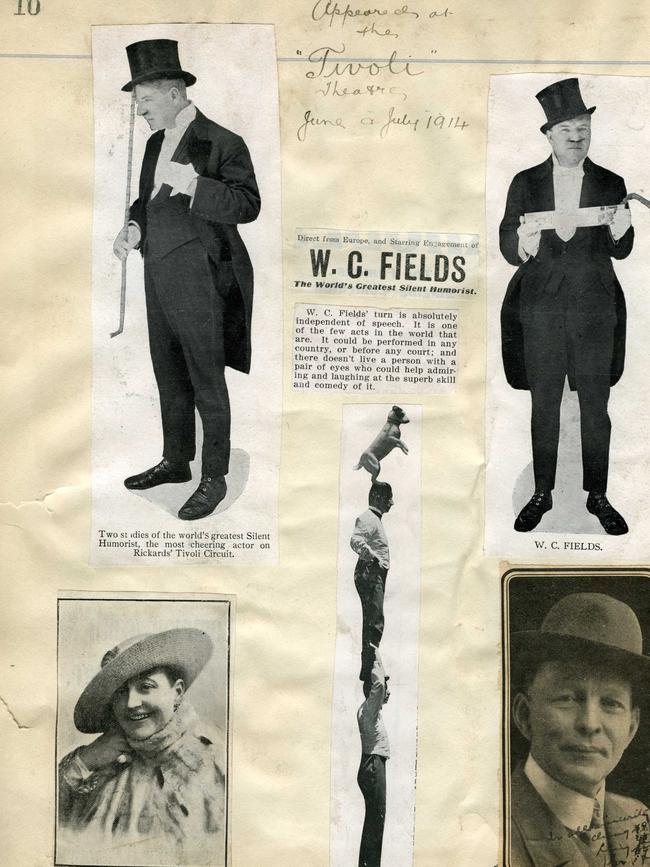
If it required silly looks alone to turn in a big income we all know dozens of people who would now be independent.”
Fields died of alcoholism in 1946 but his reputation as America’s equivalent of Charlie Chaplin continued.
He is one of the figures that appears in the crowd scene on the cover of The Beatles’ 1967 album Sgt. Pepper’s Lonely Hearts Club Band.
9/ David, Prince of Wales (later King Edward Vlll) (1920)
Sent by his father, King George V, the Prince of Wales came to Australia in the middle of 1920.
The man who in 1936 as King Edward VIII scandalised his nation by renouncing the throne to marry an American divorcee, Wallis Simpson, came to thank Australia for the support it had shown Great Britain during the Great War of 1914-18.
After a four-week journey, the Prince, at 26 the most eligible bachelor in the world, arrived in Australia on board HMS Renown.
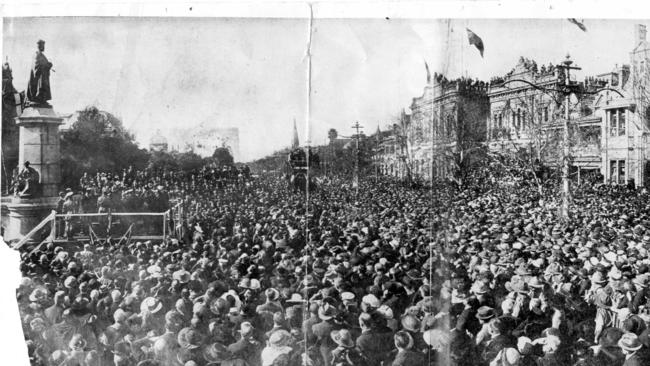
Visiting 110 Australian cities and towns during seven weeks, from late May to mid-August, he spent just six days in South Australia.
The Prince arrived by rail from Perth, where the trip across the Nullarbor Plain was broken to witness a corroboree and demonstration of boomerang throwing organised by the aboriginal welfare worker Daisy Bates.
Stopping briefly in Port Augusta, the Adelaide Railway station was teeming for his arrival on Saturday, July 3.
Edward was a popular envoy known for his frequent morale-boosting trips to the trenches on the Western Front in World War I, although there was some resentment he had received the gallantry honour of the Military Cross as at no time was he under fire.
His South Australia stay included a visit to the University of Adelaide, where, at a special commemoration ceremony in Elder Hall, he received an honorary degree.
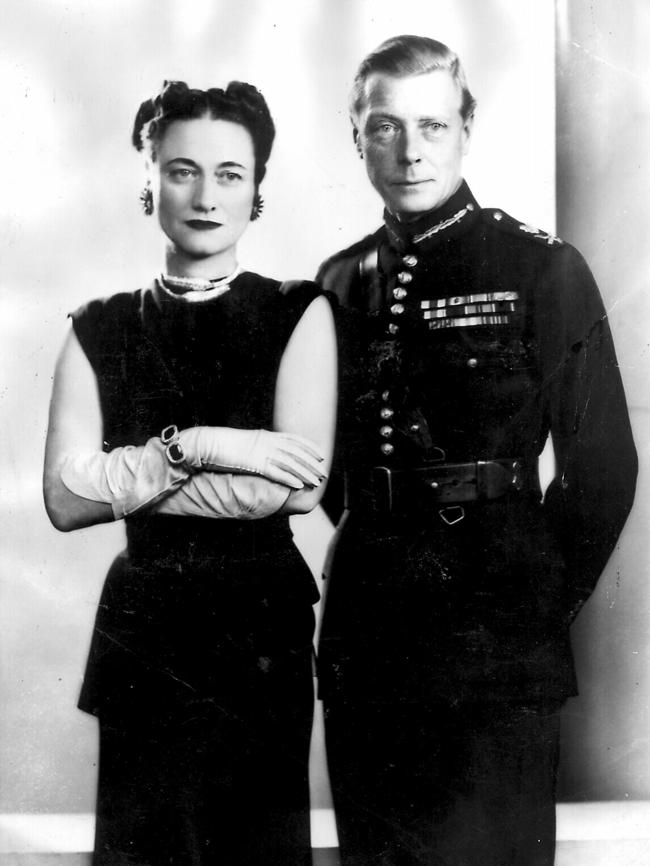
In a letter he thanked the university for its welcome and included mention of his father’s 1901 visit (during which the Prince of Wales Building at the University was named),
He referred to himself as a ‘comrade-in-arms of so many Adelaide men’.
He left South Australia on July 8 via road and rail for Wallangarra in Queensland.
During the abdication crisis, and after Prime Minister Joseph Lyons declared his strong objection to Edward marrying a divorcee, the King responded that there were “not many people in Australia and their opinion did not matter”.
10/ Sir Arthur Conan Doyle (1920)
The prolific creator of Sherlock Holmes and confirmed spiritualist delivered a rousing lecture, ‘How To Talk With The Dead’, at the Adelaide Town Hall in September 1920.
It was the first presentation of an epic five-month speaking tour of Australia and New Zealand for the 61-year-old author
“If all are as courteous and kind as you are, I look forward with less trepidation to what lies ahead,” he told the audience
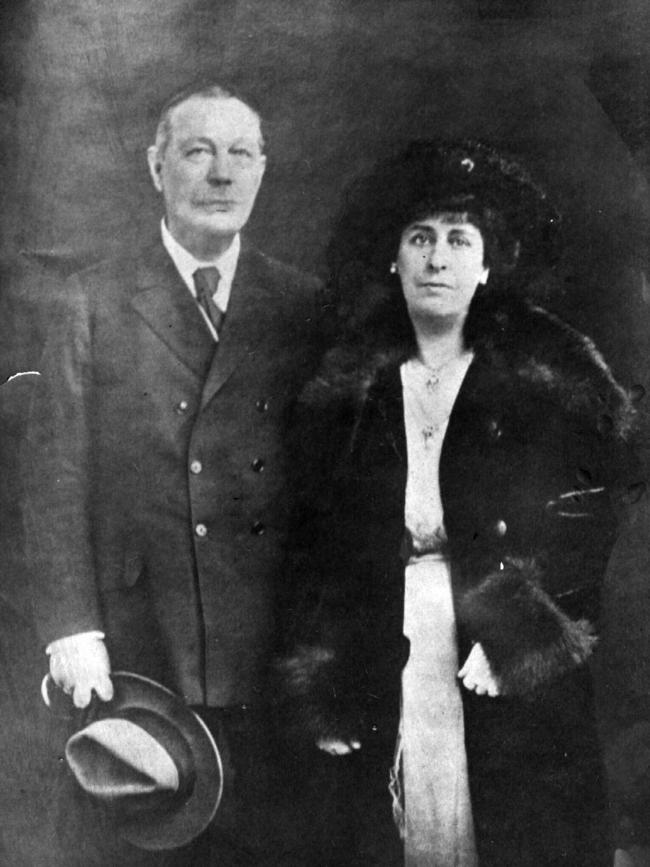
A report in The Daily Herald stated: “Of the lecturer’s sincerity there can be no doubt, and his enthusiasm likewise is beyond question, but at the conclusion of the lecture there seemed to be a feeling of disappointment.
“It impinged on the one side on religion and on the other side on science, and since he was neither a theologian nor an expert in science one might reasonably ask what his credentials were for talking on spiritualism.”
Doyle, who was initiated as a Freemason in 1887, had a longstanding interest in mystical subjects from about the same time.
Despite being a close friend of Harry Houdini, who was a prominent opponent of the Spiritualist movement exposing many proponents as frauds, Doyle continued with his spiritualist mission until his death in 1930.
11/ Anna Pavlova (1926)
The great Russian prima ballerina, principal artist of the Imperial Russian Ballet and the Ballets Russes of Sergei Diaghilev, was the first to tour the world with her own company. Most famous for the creation of the solo The Dying Swan, Pavlova performed in Adelaide during both her Australian tours of 1926 and 1929.
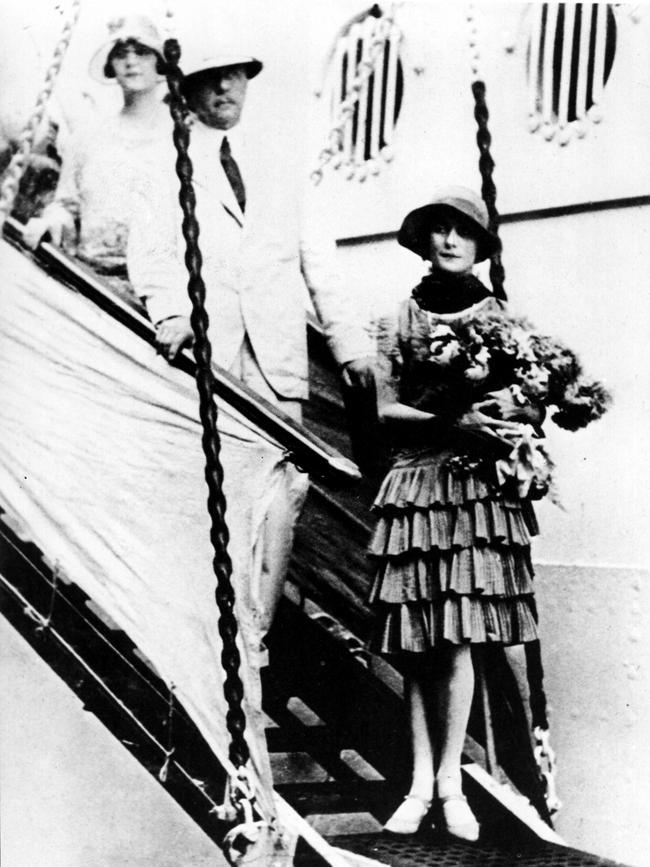
The Theatre Royal at 34 Hindley Street, demolished by the Miller Anderson Group in 1962 for a five-storey car park, was the venue on both occasions.
In late July and early August 1926 Pavlova performed three programs not previously seen down under, including Amarilla, The Polish Wedding, Invitation to the Dance, Egyptian Ballet and Snowflakes.
She also staged several divertissements – short pieces showing off a particular ballet technique – that she choreographed herself.
The company consisted of 45 dancers, including Mount Gambier-born Robert Helpmann, who was just 17 at the time and still spelling his name with one ‘n’.
One of several explanations for Helpman’s decision to change his surname to Helpmann was that Pavlova, a devotee of numerology, had suggested he avoid any bad luck associated with having 13 letters in the name ‘Robert Helpman’.
While in SA, Pavlova visited artist Hans Heysen at his Hanhdorf home, The Cedars, and fell in love with a painting of flowers.
The canvas was also the favourite of Heysen’s wife Sallie so he offered to paint Pavlova a replacement.
Receiving it on her return to Europe she hatred it so much she returned it immediately.
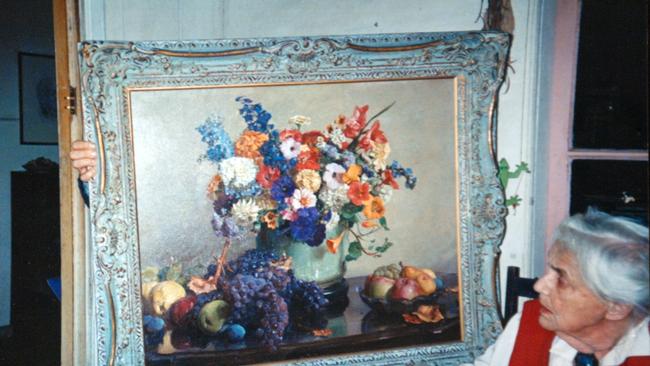
During this antipodean tour, the Pavlova meringue-based dessert was made in her honour. Debate still rages over who and where the first Pavlova was created but most evidence suggests it was a New Zealand chef in Auckland, and not one in Australia, who was responsible for the dessert dressed in fruit and cream.
Just two years after her return tour to Australia of 1929 she was dead.
Told she required a lung operation and would never dance again she refused, saying “If I can’t dance then I’d rather be dead.”
She died of pleurisy in The Hague, the Netherlands, a few days later – just a few weeks before her 50th birthday.
12/ Phar Lap (1930)
The man on the temperamental public address system cleared a nervous tickle from his throat and switched on the microphone.
“There is a late scratching in the Adelaide Cup,” he said, pausing for effect. “The horse in question is No. 1 – Phar Lap.”
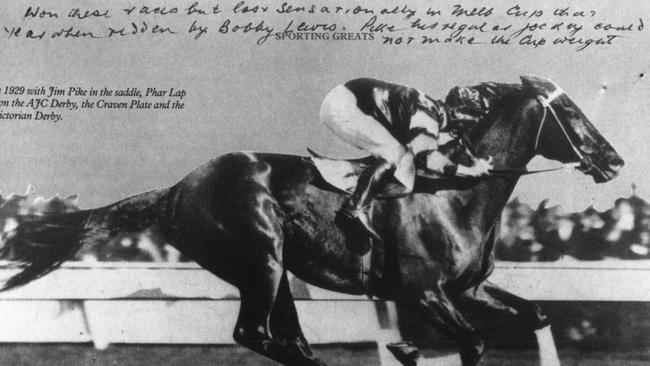
It is the most sensational broadcast ever made on a South Australian racetrack but few are left who remember the drama of nearly 90 years ago and the stunned looks on thousands of faces that Wednesday afternoon in May, 1930.
The record crowd was assembled at Morphettville racecourse in adoration of one horse, the sporting hero of the nation.
And, with no warning, the shock announcement was made just half an hour before the running of the race.
Was “Big Red” injured, or had he been ‘nobbled’ as criminals, tied to bookmakers, had tried to do before?
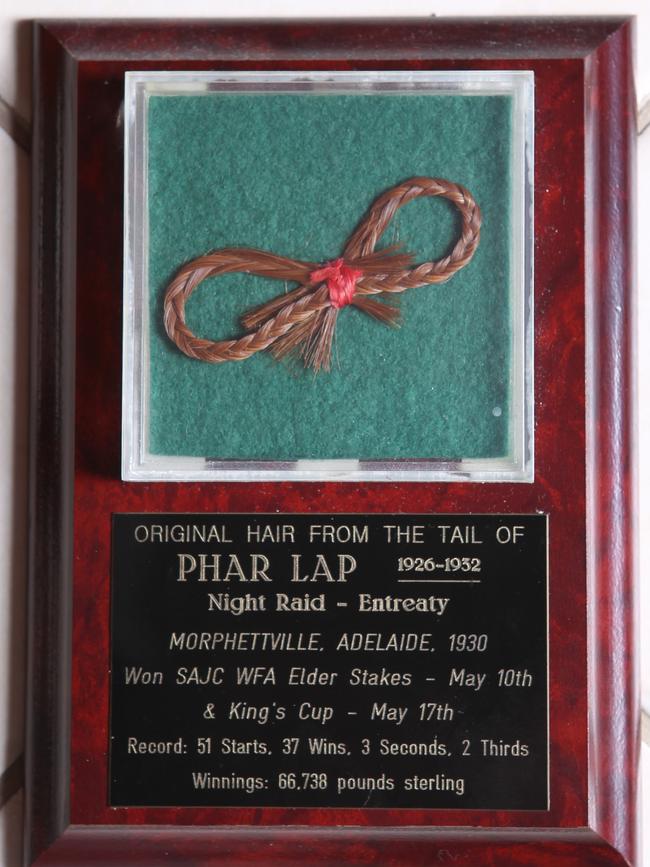
Phar Lap’s health was clearly not at issue when, as a consolation for the confused and agitated gathering, it was declared he would lead out the Cup field.
Trainer Harry Telford was no diplomat and didn’t help the public mood by telling the press the next day: “I never intended to start Phar Lap in the Adelaide Cup.
“He was left in (as an acceptor) in the interests of getting a crowd there.”
Phar Lap arrived in Adelaide – by train – six days prior to his first run and win in the Elder Stakes the Saturday before the Cup.
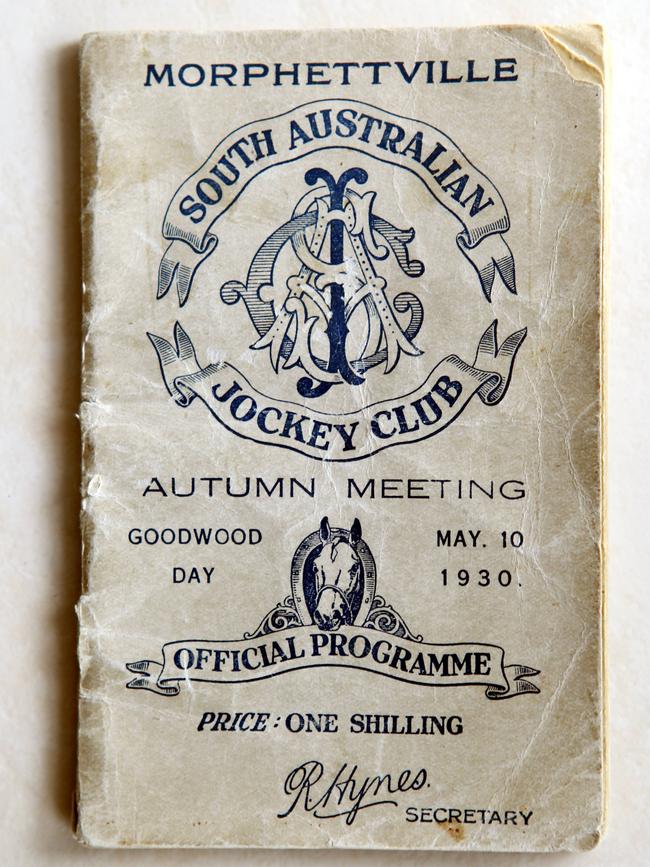
After the Cup Day debacle there was less excitement three days later surrounding his second race of his Adelaide sojourn – the King’s Cup.
Taking on five rivals, it only required regular jockey Jim Pike to release the brakes for “Bobby (another nickname) to pick up a 14th win of an astonishing career.
The glamorous chestnut would record 23 further victories before his death in America, just two years after his scratching from the Adelaide Cup.
Next week: Part 2 – 13 more historical figures in South Australia

